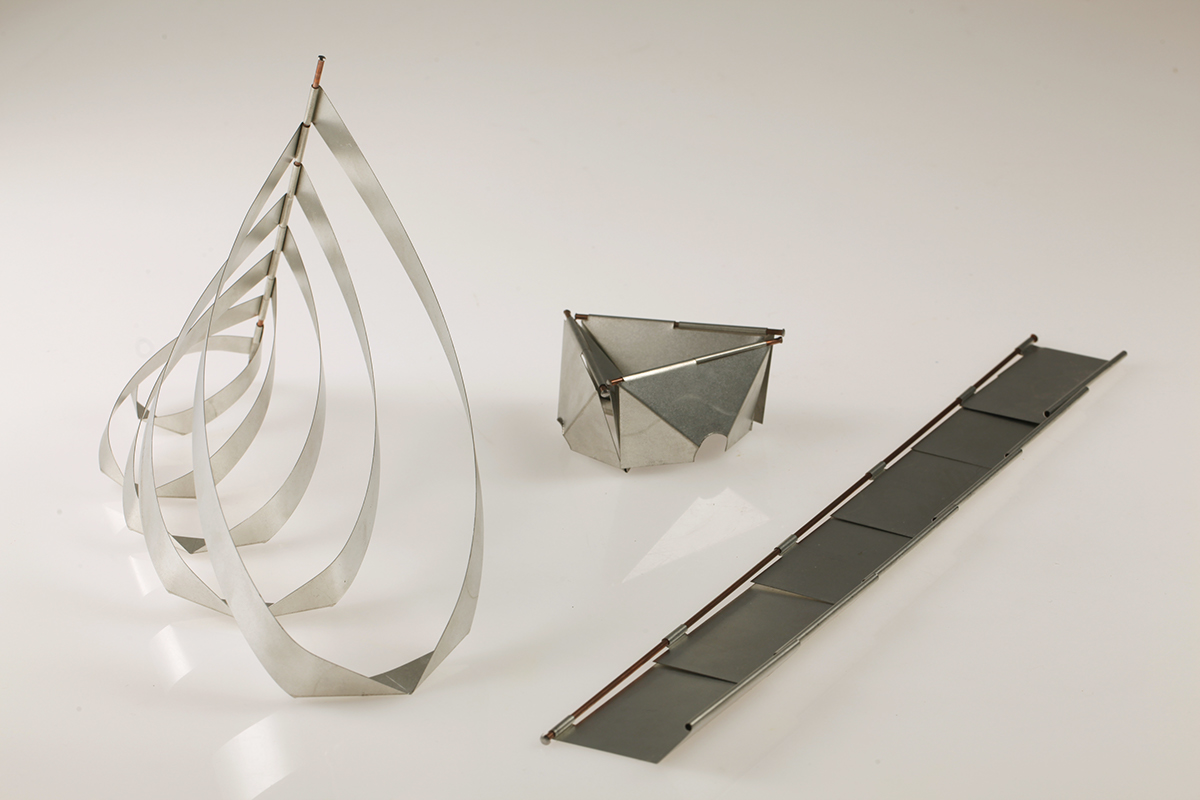Metal 1 is a required sophomore studio class in industrial design, meant to introduce us to metal as a material, as well as to promote problem solving and material sensitivity.
Movement was my main focus of exploration in Metal 1. I discovered my interest early in the semester, and it served as my guiding principle for the three main projects. Each material lent itself to a different type of movement: tin plate was well suited to hinges, while aluminum had the potential for interior tracking and tapping.
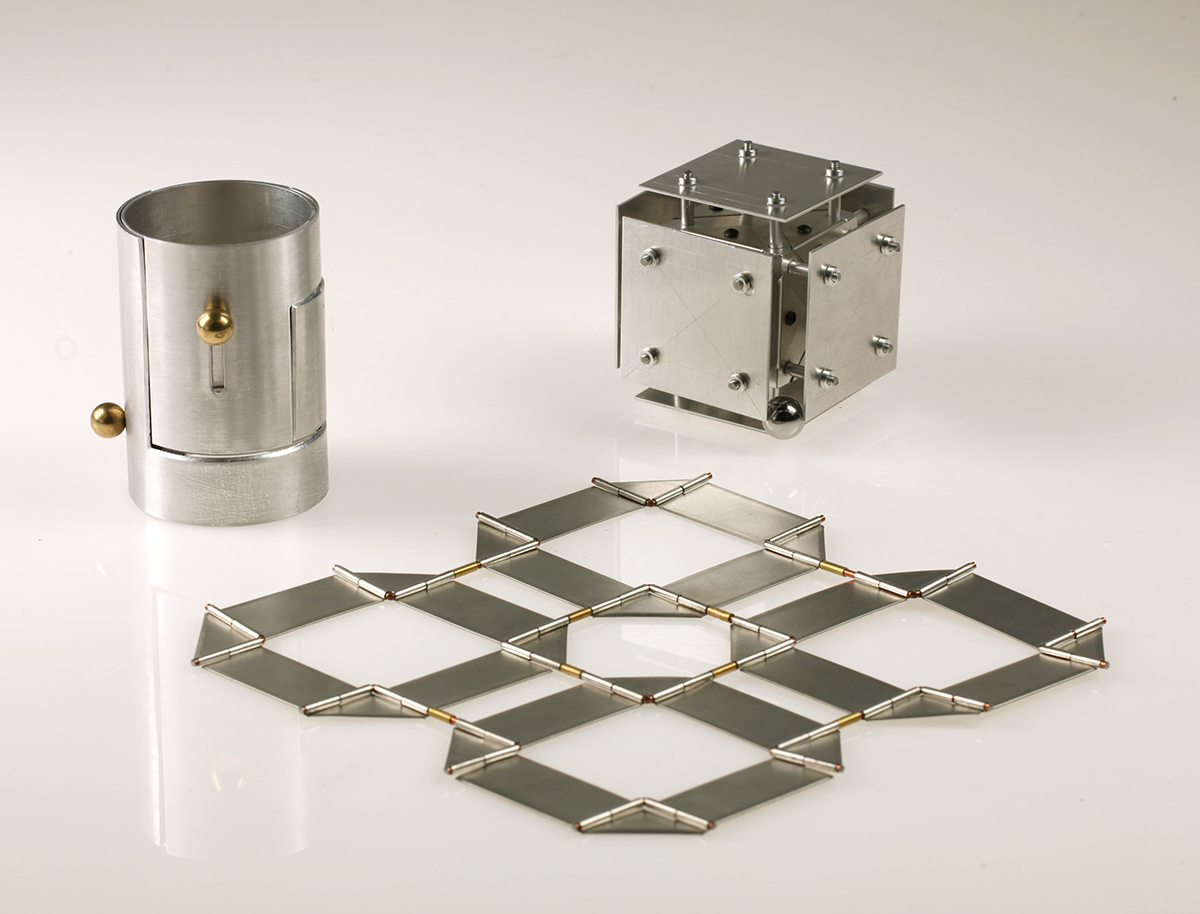
Passive States
clockwise from right: cube, tin plate final, aluminum final
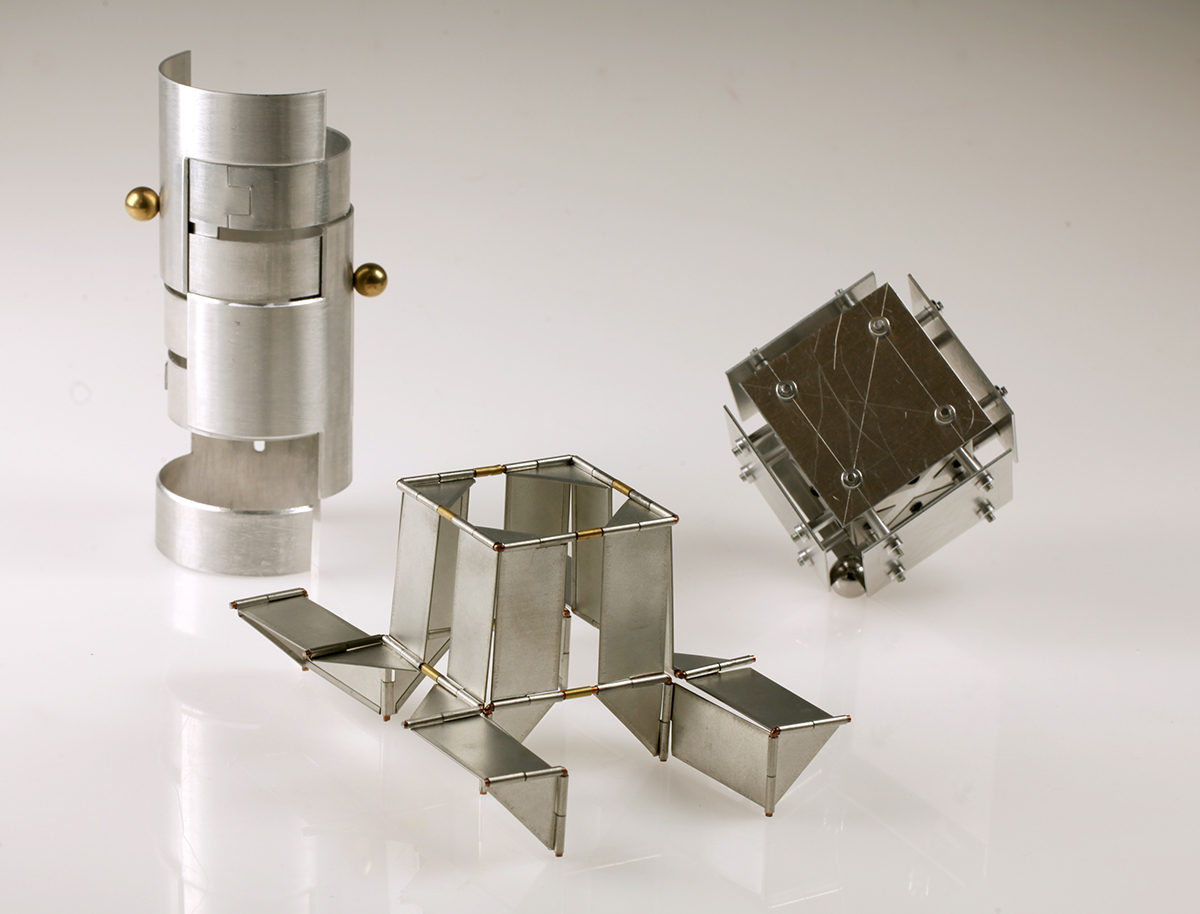
Active States
------------------------------------------------------------------------------------------------------------------------------------------------------
Final project: construct a cube with dimensions between 2" and 3.5".
My goal was to create a cube that invited manipulation.
It has two parts-an interior cube and projecting faces. The spacing between the two allows a ball bearing to travel freely along the edges of the cube without rolling between the faces or falling out of the corners.
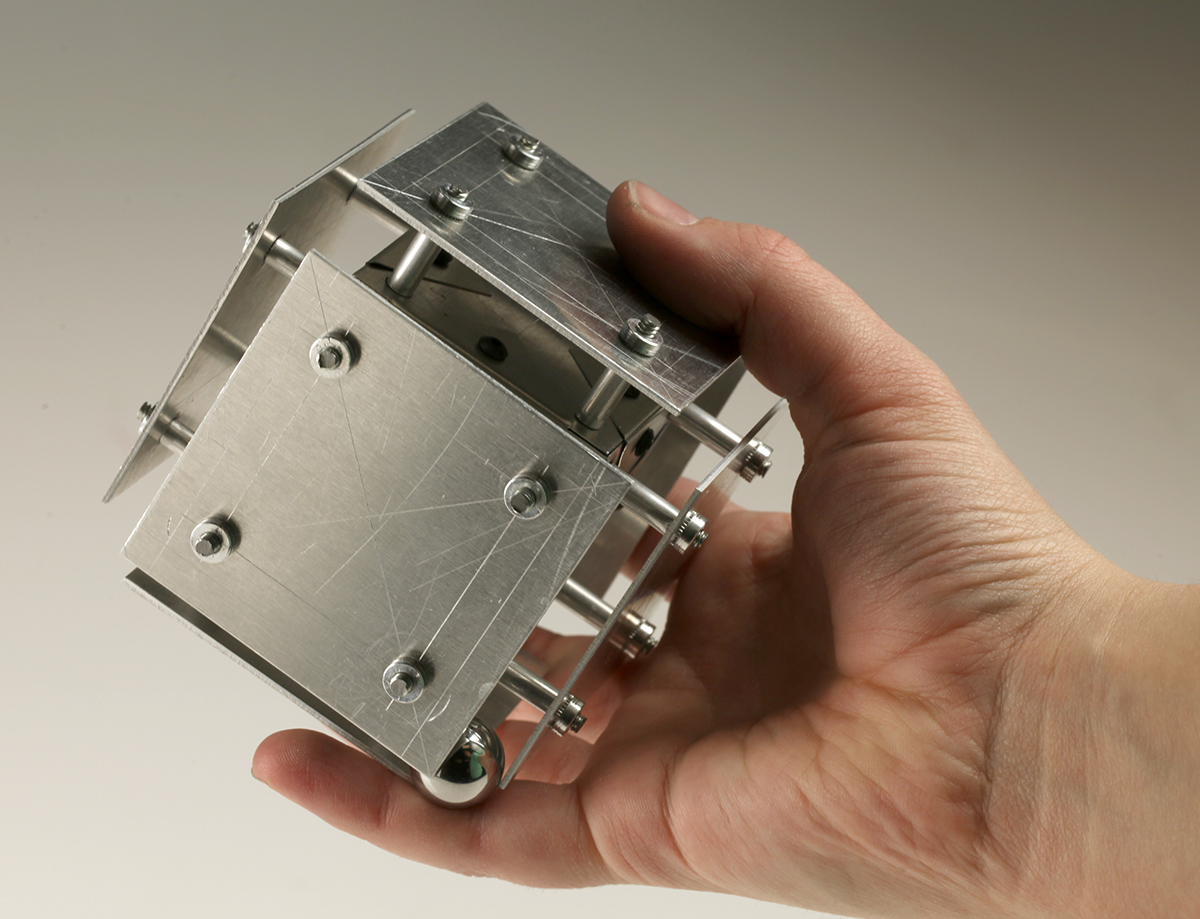
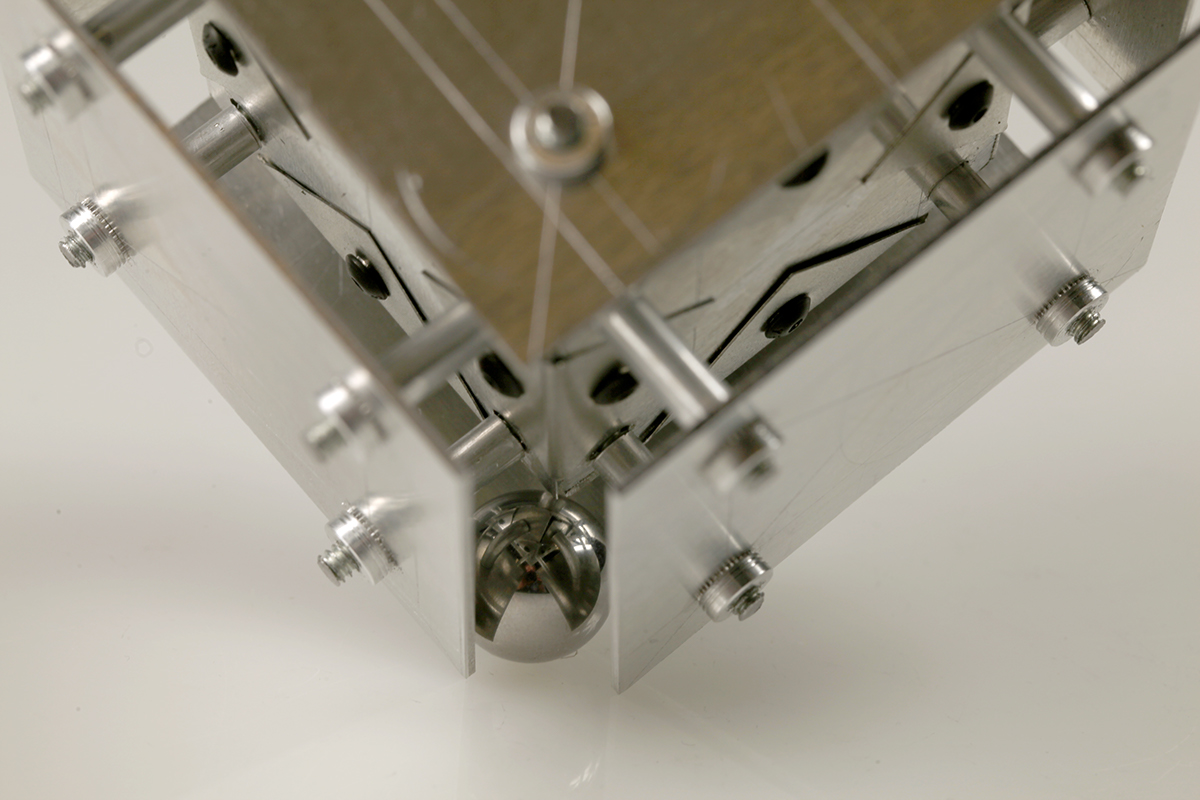
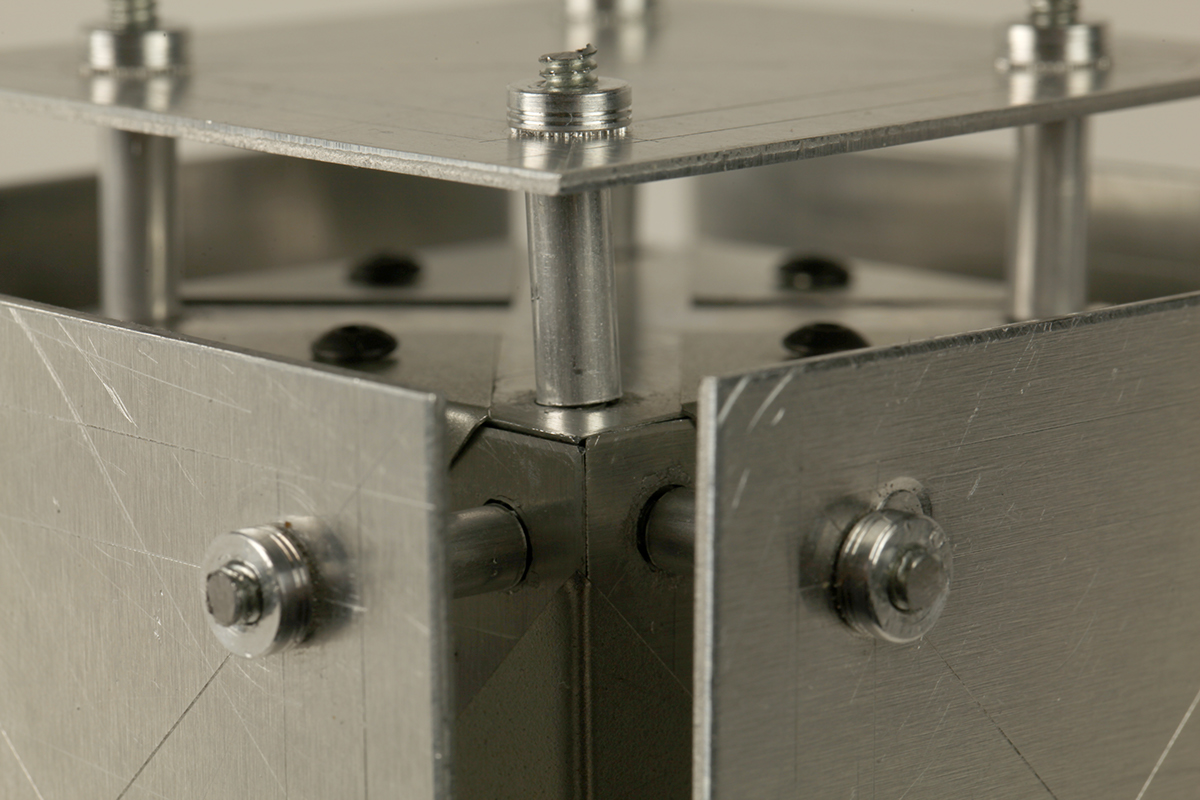
The interior cube is constructed with six 2" squares with edges filed to 45°. Each face has eight holes-four with PEM fasteners for the threaded rod that connects the outer and inner faces, and four tapped holes to accommodate the screws that hold the inner faces together. The inner faces are connected to each other with 1" tin plate squares folded to 90° and attached with button head screws. The threaded rod passes through spacers made with aluminum tubing.
------------------------------------------------------------------------------------------------------------------------------------------------------
Aluminum final
I wanted to take advantage of the structural integrity of the aluminum and its ability to accomodate interior tracks, so I made a puzzle for my aluminum final.
It is made with four main pieces-a central column and three outer pieces that combine to cover it. The ball bearings can be partially unscrewed to allow manipulation of the three pieces, then tightened to lock them in a new configuration.
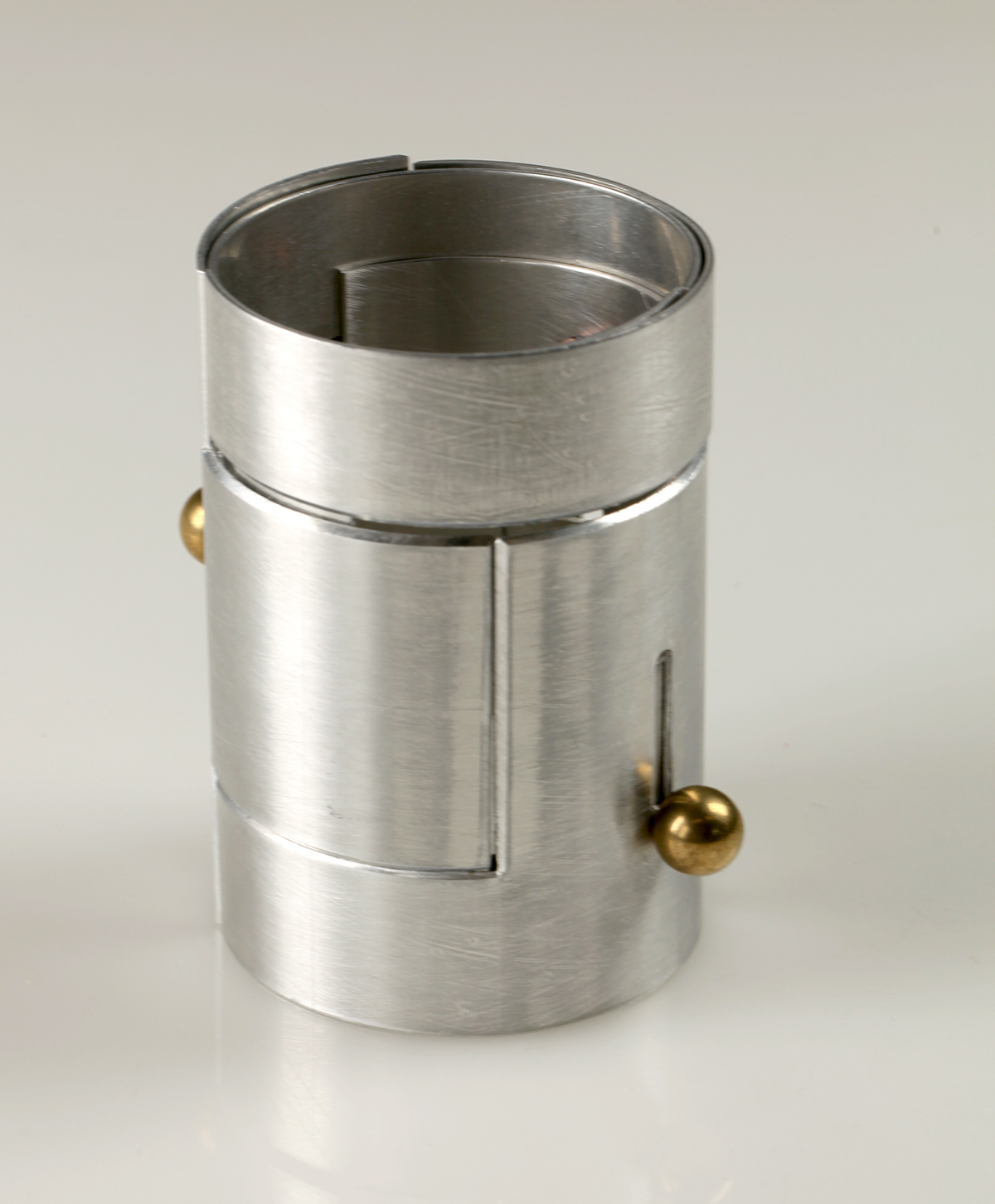
Passive state
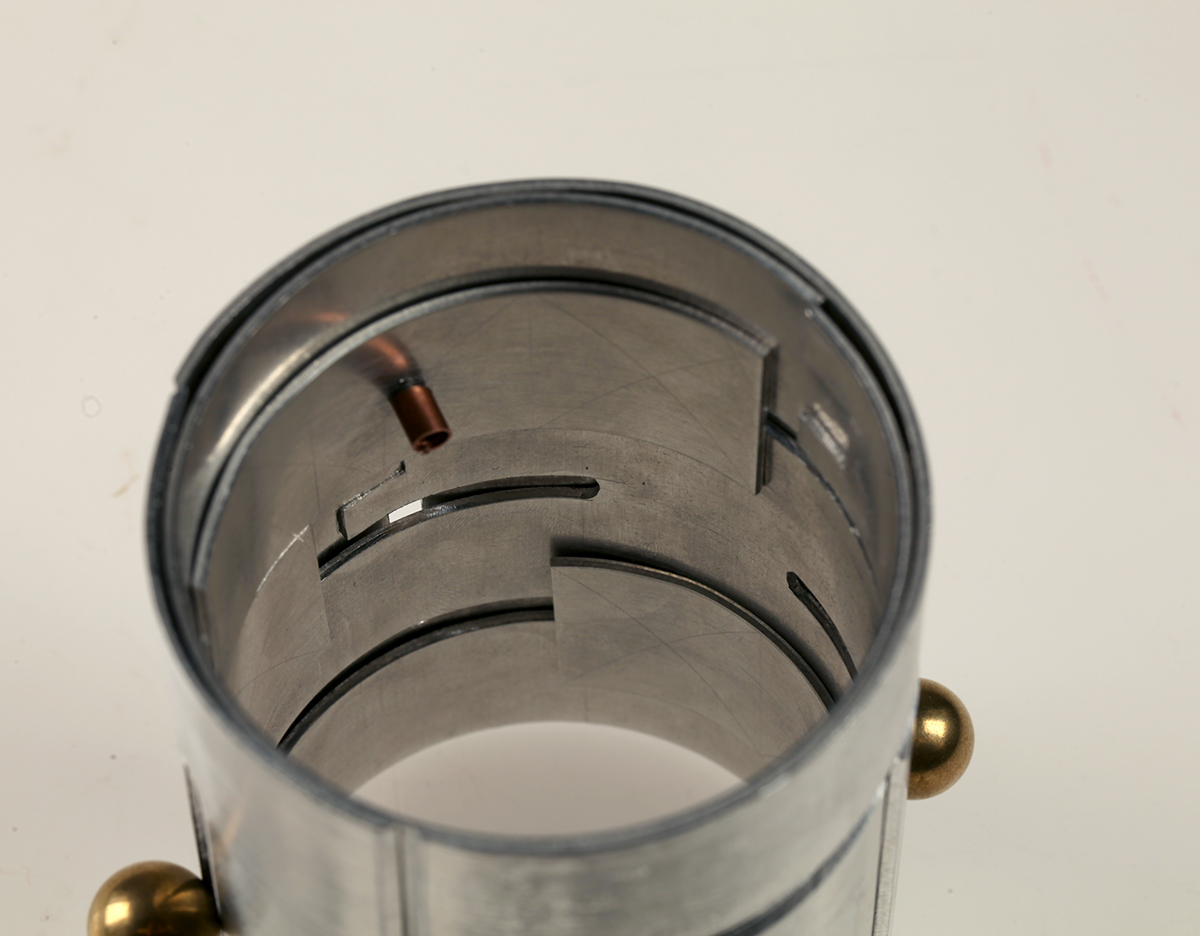
The interior column has three offset tracks that the outer pieces can move along. The outer pieces are connected with threaded rod, a tapped ball bearing, a section of threaded tube, and a curved back. The curved back prevents the rod from turning when the ball bearing is unscrewed.
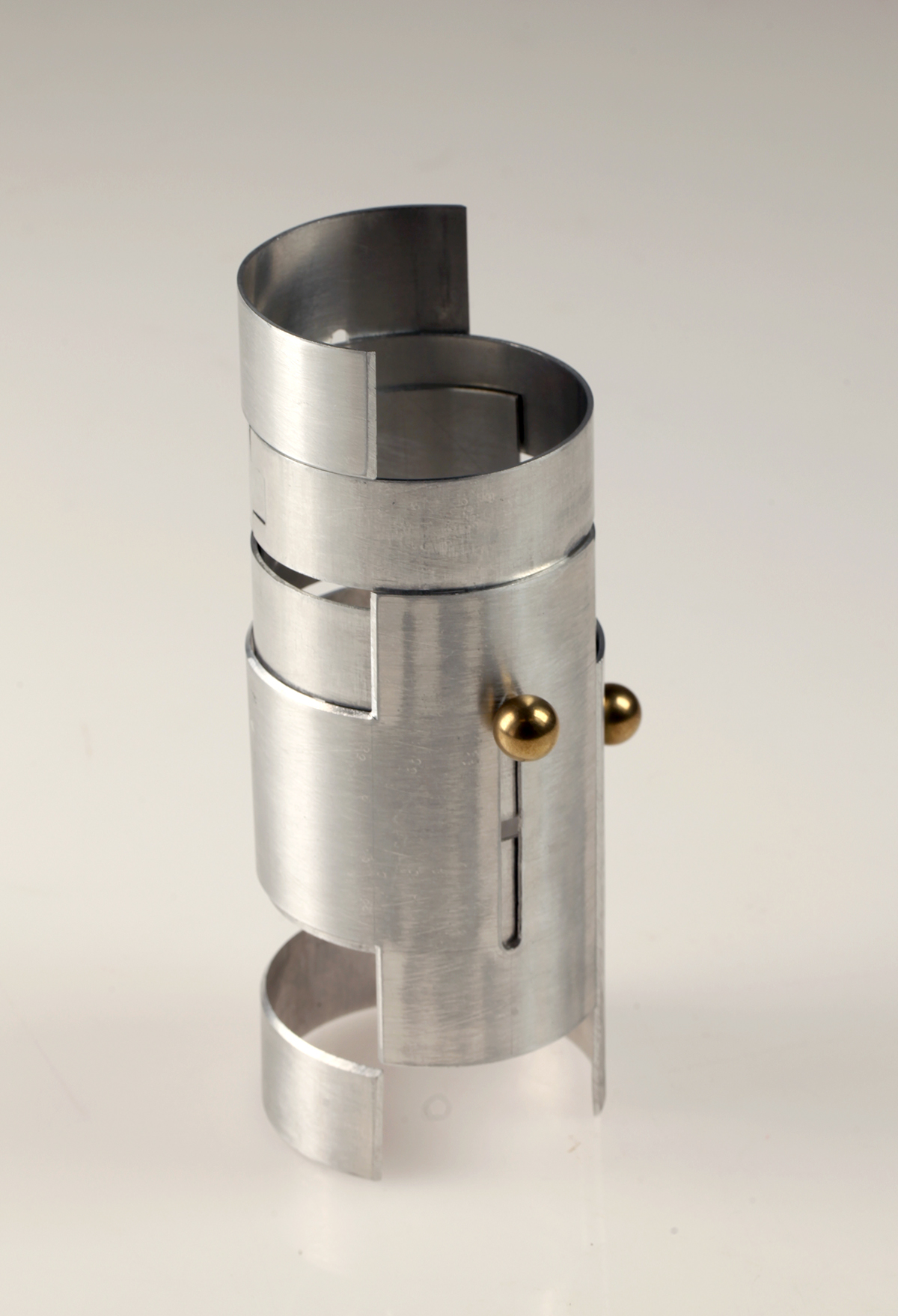
One of many potential active-state configurations

Preliminary studies leading up to my final.
------------------------------------------------------------------------------------------------------------------------------------------------------
Tin Plate final
This was the first of my three main projects. I wanted to explore the potential of hinges, and how they allowed many forms to come out of one shape.
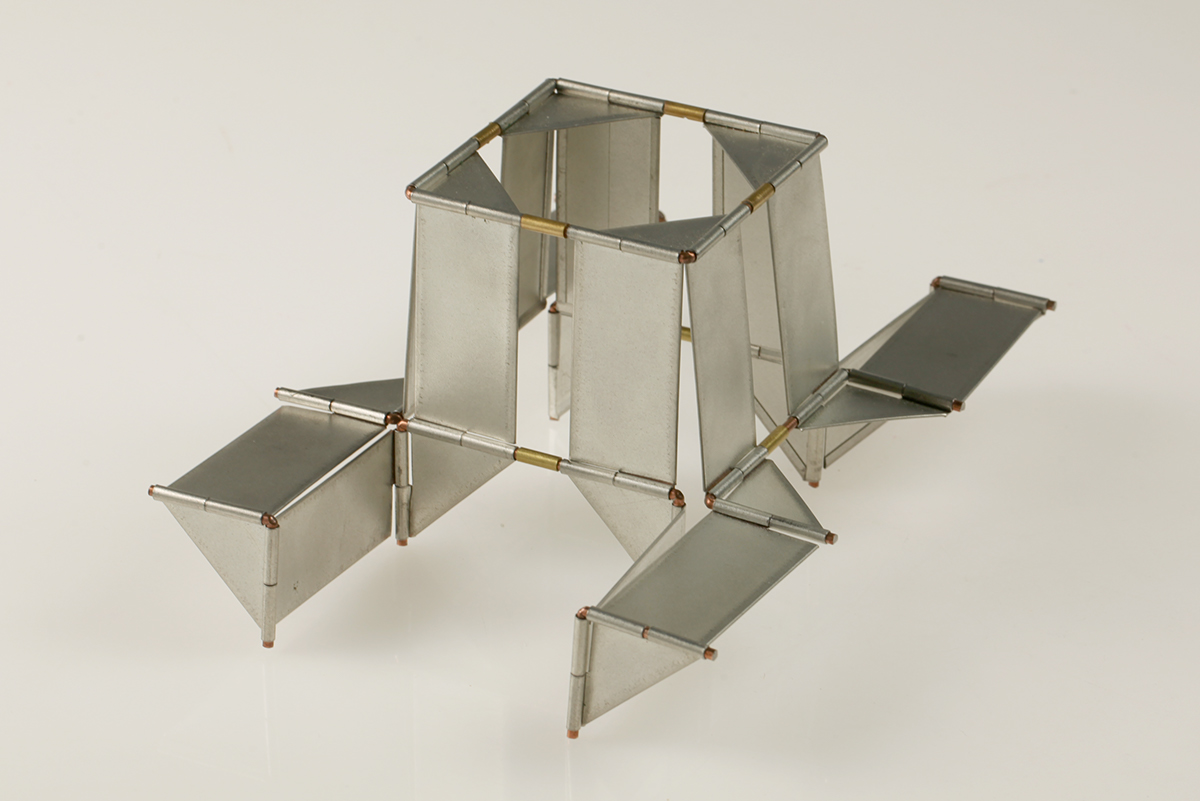
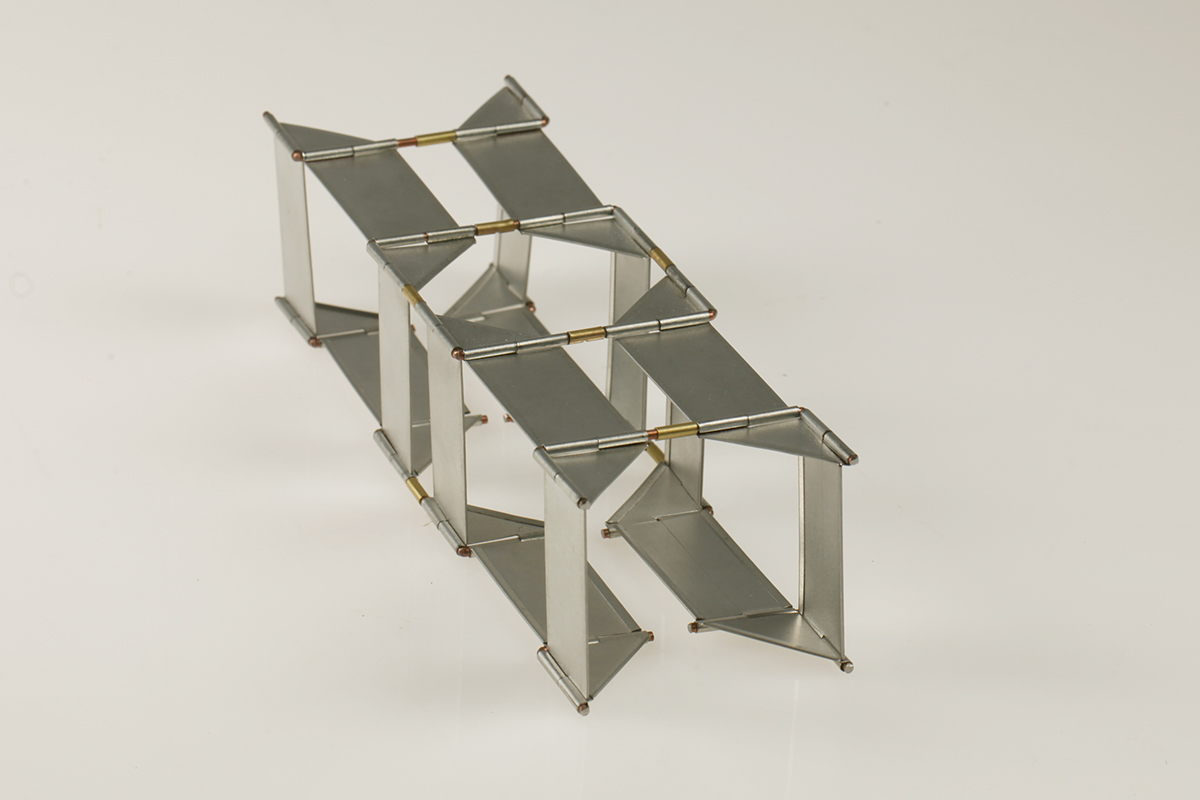
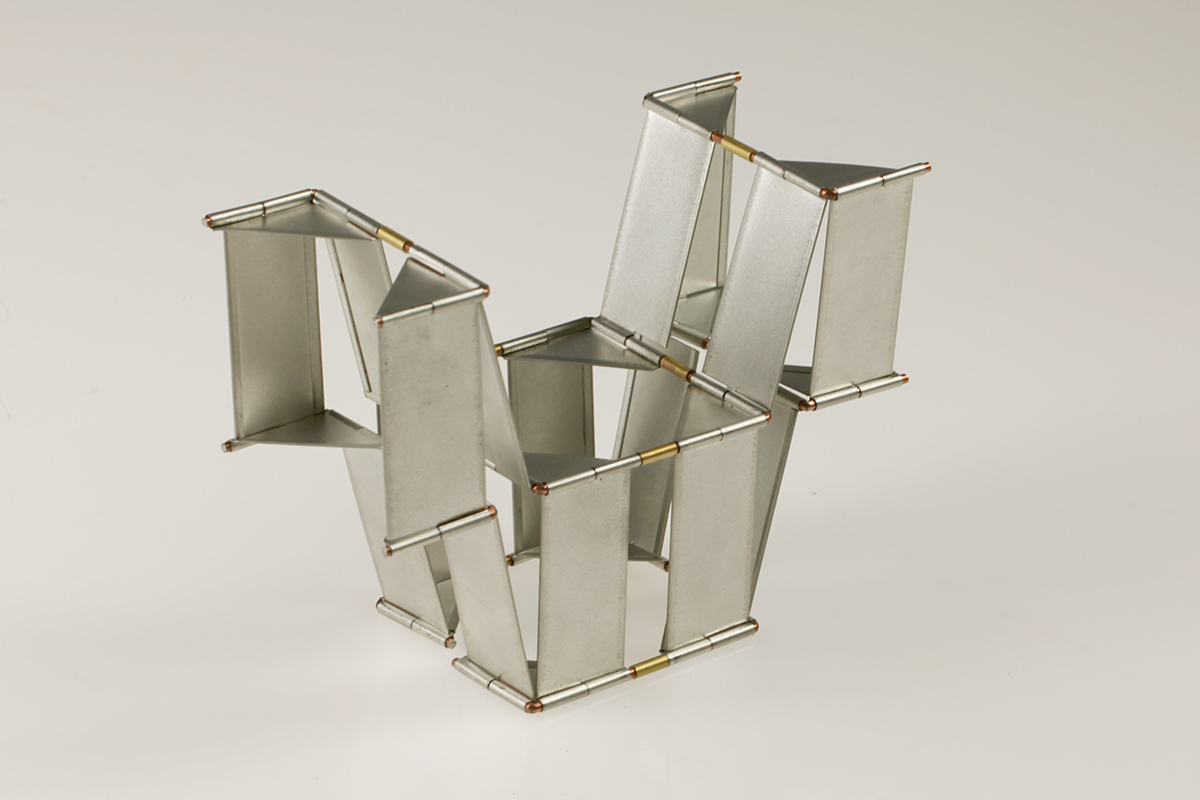
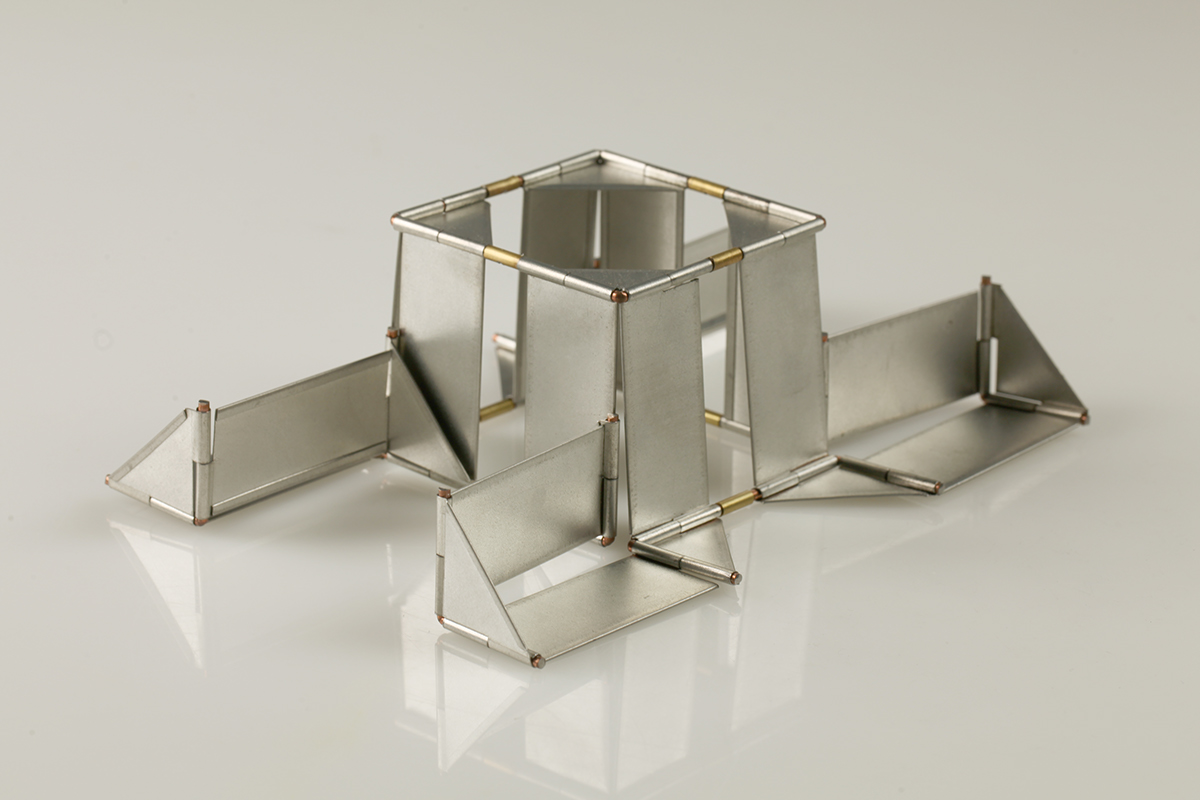
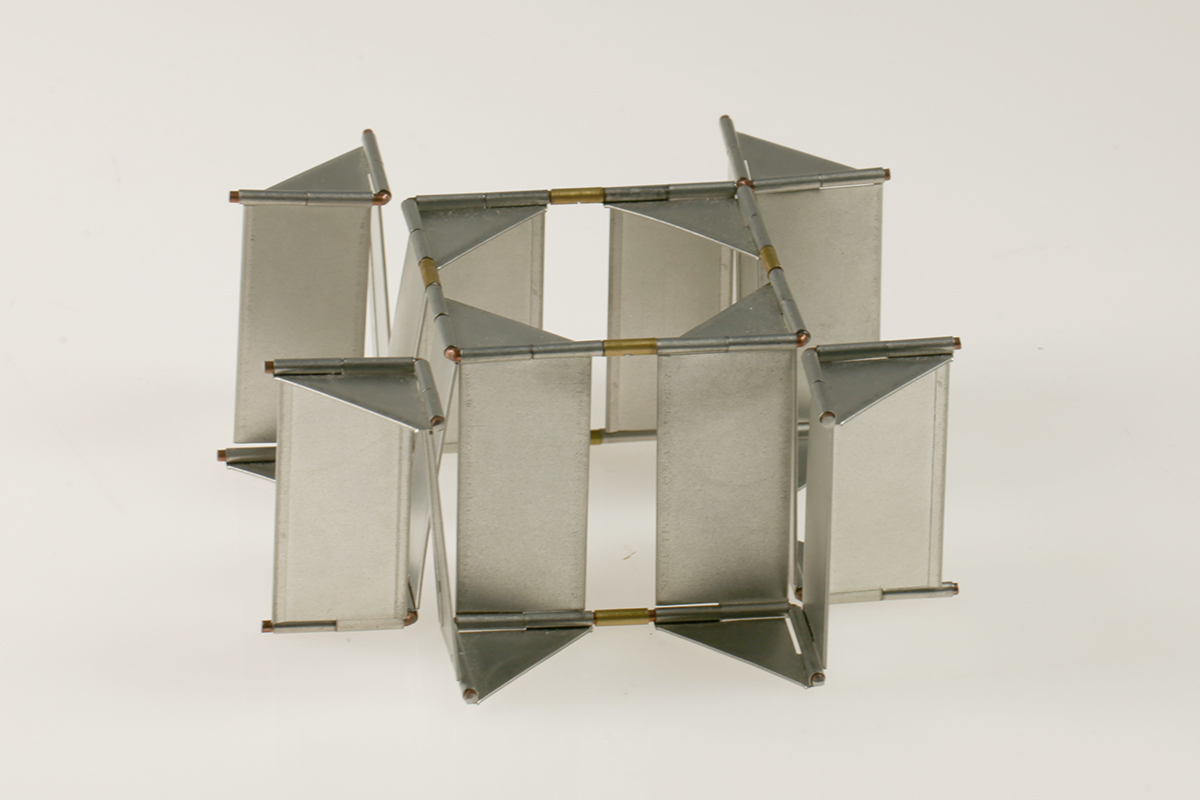
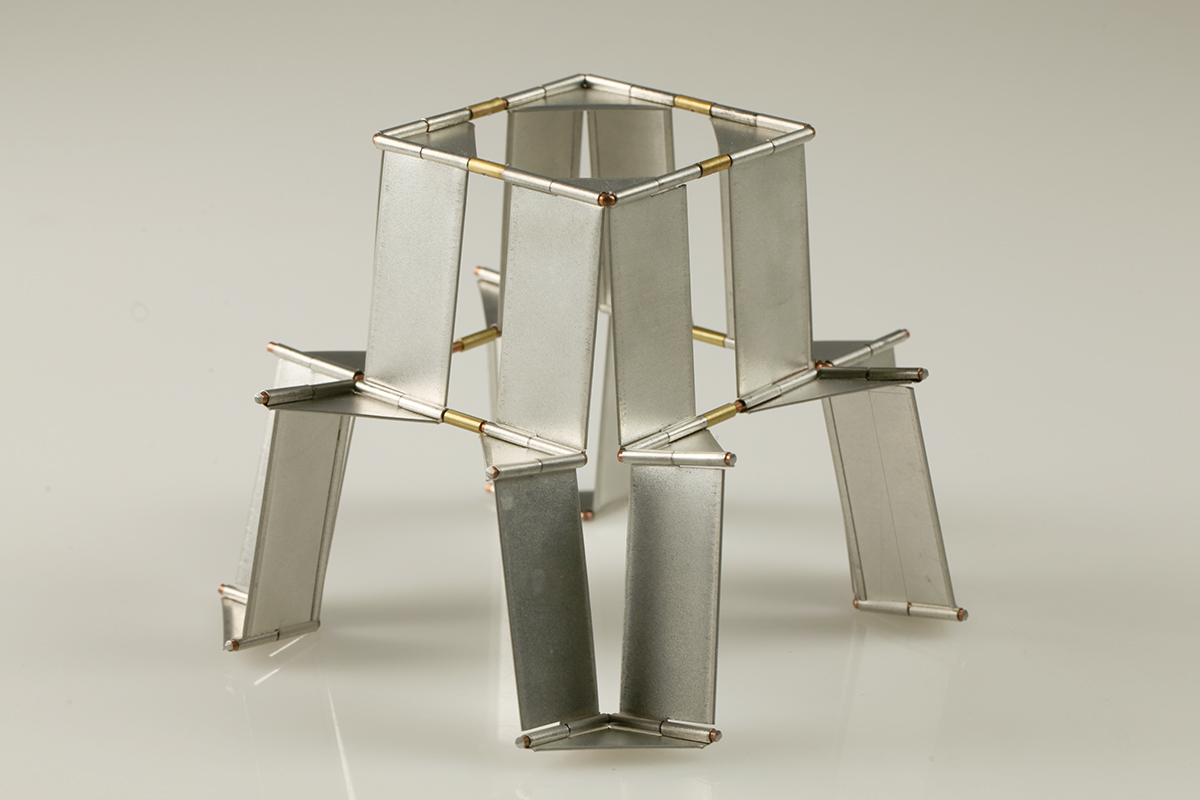
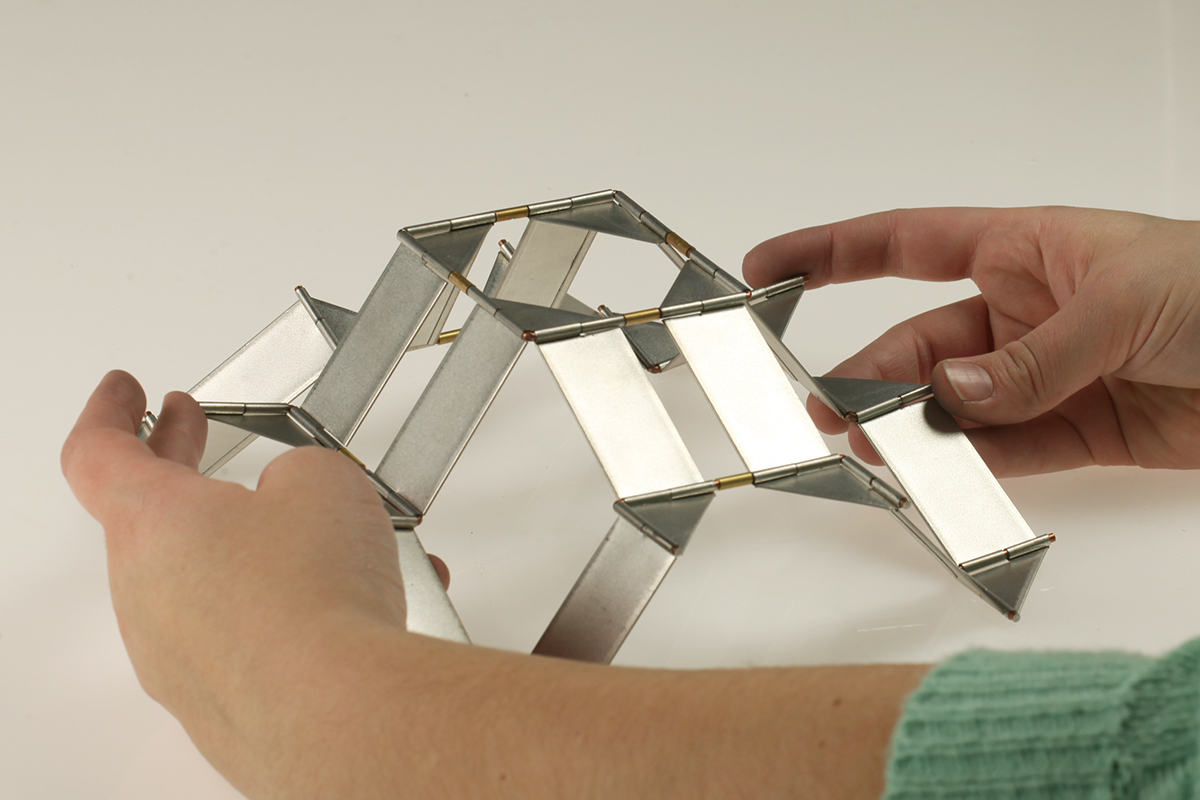
The different forms are created through manipulation of the sheet as it is being folded into shape.
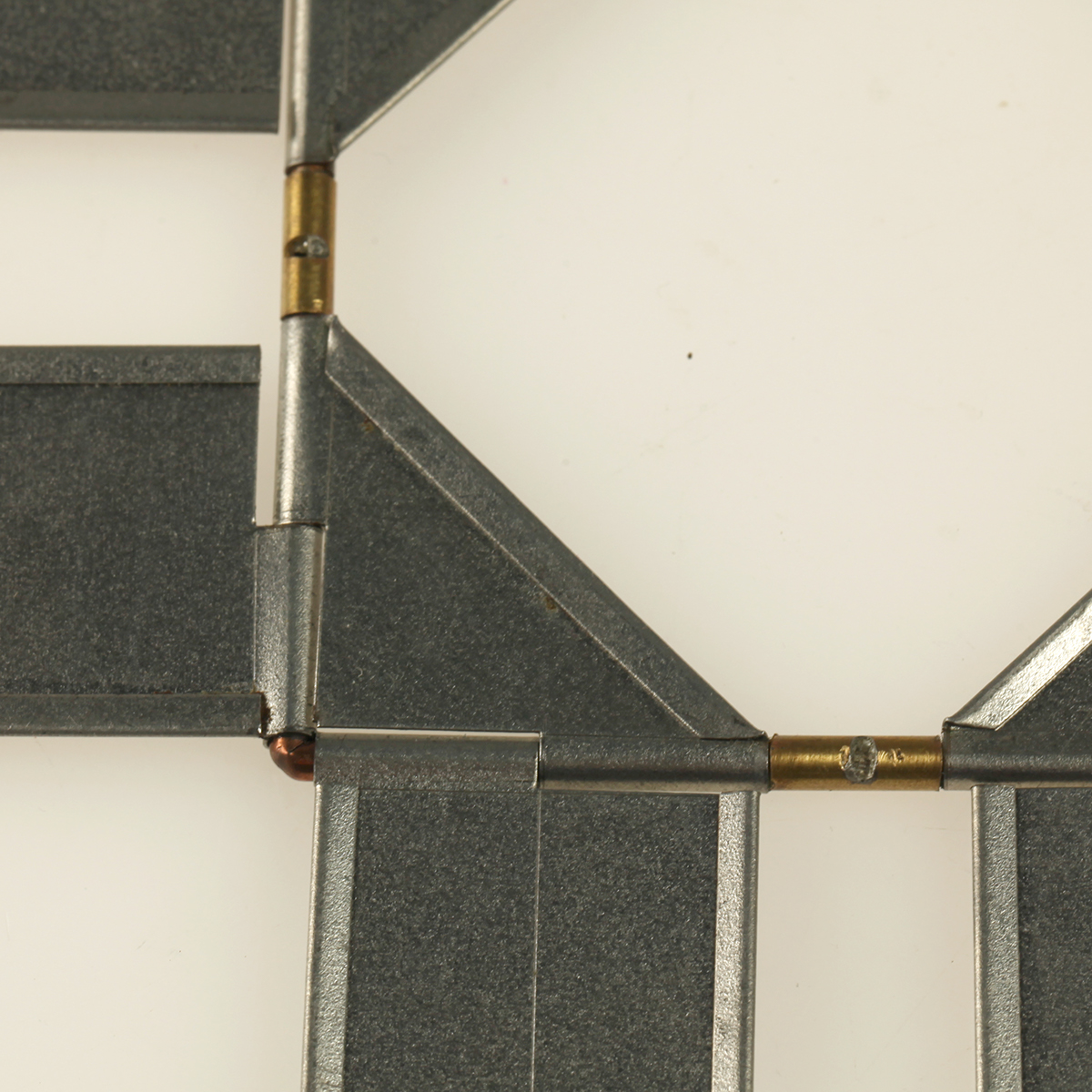
The central square is made with four wire corners joined between the tin plate with brass tube and solder.
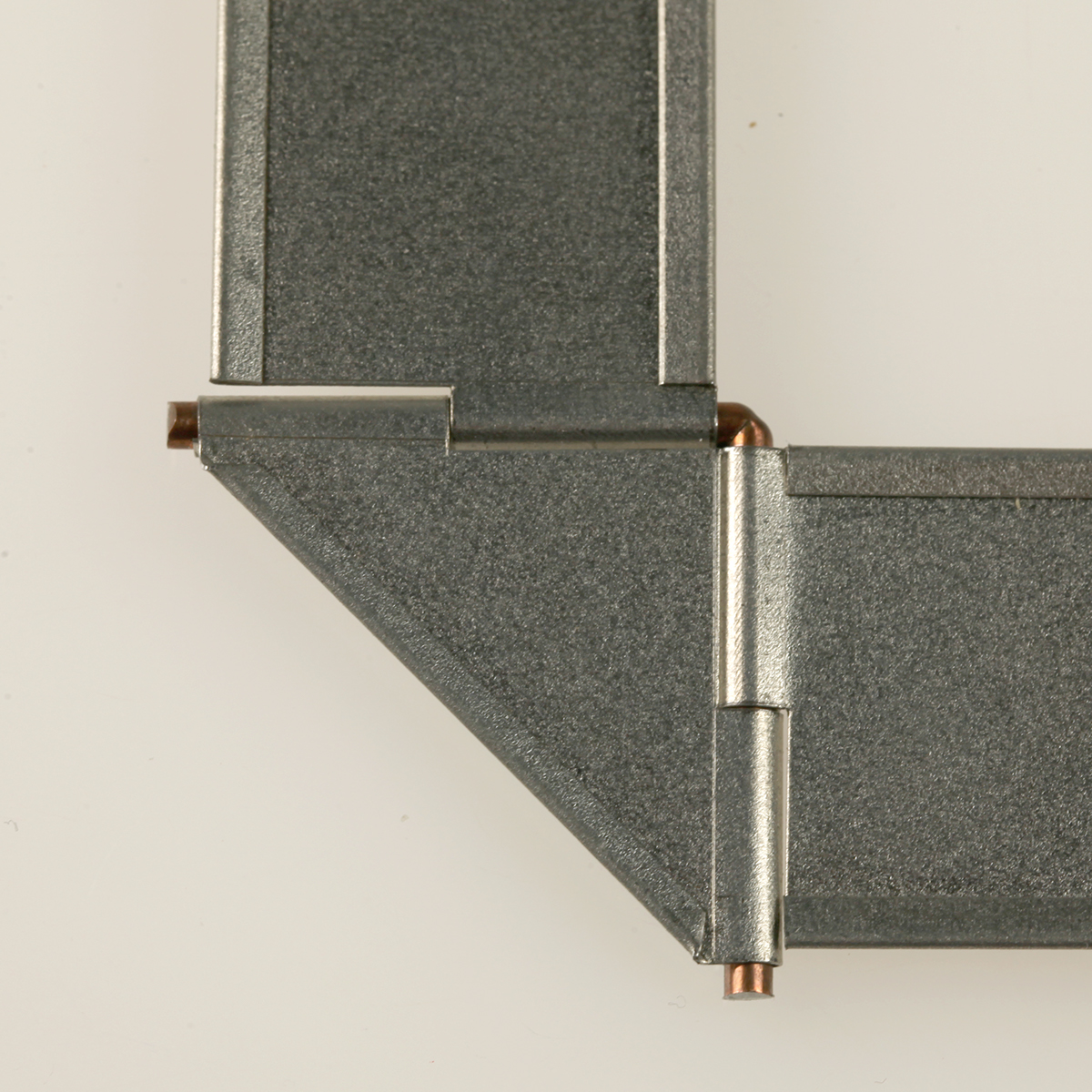
The method for attaching the corner pieces meant that the ends of the steel wire didn't need to be peened.
------------------------------------------------------------------------------------------------------------------------------------------------------
Preliminary studies:
My first explorations with movement. Includes hinges, tabs, and tension locking methods.

